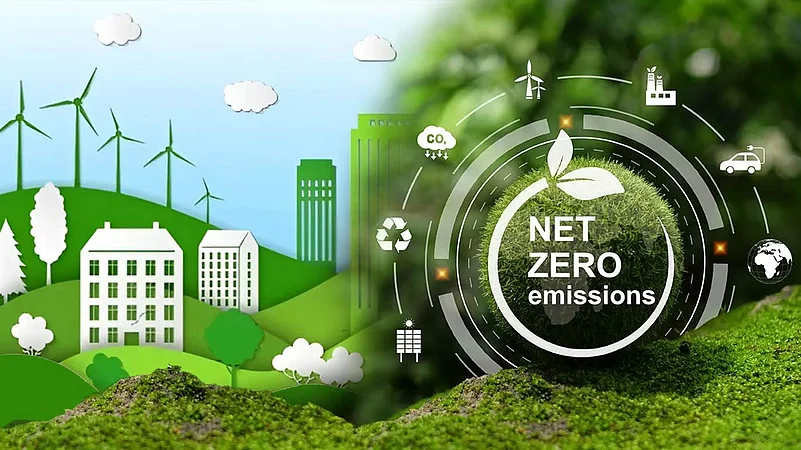In the recent budget, the finance minister announced the development of climate taxonomy. This framework will help differentiate economic activities that align with climate and environmental goals, thus harmonising economic growth with environment.
Namita Vikas, founder and managing director of AuctusESG, highlights the challenges and opportunities of the proposed climate taxonomy, "It will bring standardisation and a unified approach to structuring financial instruments and capital raising. It has the potential to demystify and enhance capital for climate adaptation and mitigation, addressing greenwashing and mislabelling that deter capital deployment."
She adds, "Climate is a complex subject, and any taxonomy will take a couple of years to operationalise. Implementing such taxonomy across sectors presents a significant challenge, requiring thorough checks on technical capacity. India is known for being a fast adopter, but whether there will be a surge in green bonds or sustainability-linked loans remains to be seen. In the long run, this will shift capital allocation towards climate transition, thus supporting India's long-term climate commitments."
Advertisement
India has been making strides with various green initiatives to support both economic and environmental growth. This year, the government announced a plan to raise Rs 12,000 crores through green bonds.
Additionally, the banking sector is moving towards greener practices, with the Central Bank of India unveiling a green deposits framework, the Securities and Exchange Board of India (SEBI) introducing a green debt securities framework, and the Reserve Bank of India joining the Central Banks of Supervisors Network for Greening the Financial System (NGFS).
The climate taxonomy comes against the backdrop of India's recognition of its need to achieve net zero goals. India has reminded developed nations of the unfulfilled promise of $100 billion per year for green transition and has now called for $1 trillion per year in climate finance for developing countries from 2025. According to the recent Economic Survey, India requires Rs 56.68 trillion for climate action by 2030.
Advertisement
Countries with established climate taxonomies, such as South Africa, Singapore, Canada, and South Korea, have seen positive impacts.
The European Union, a pioneer in this realm, developed its taxonomy in 2020 as part of the European Green Deal’s 2050 climate neutrality target. Countries can draw inspiration from the EU's six environmental objectives: climate change mitigation, climate change adaptation, sustainable marine and water usage, circular economy transition, pollution prevention and control, and biodiversity and ecosystem protection.
Anirban Mukherjee, Managing Director and Partner at Boston Consulting Group notes: "A climate taxonomy is more than just a 'list of green technologies'; it signifies the pathways a country or entity is committing to for a low-carbon future. To create a robust climate taxonomy, a country must 1) ensure the technologies included are relevant to its circumstances and plans, 2) provide the committed support required through policy and regulatory frameworks to ensure effective implementation, and 3) achieve a level of global consensus that facilitates collaboration with international parties, especially in technology transfer and financing."
Mukherjee adds, "Balancing these elements makes developing an effective climate taxonomy a challenging but ultimately rewarding task."
The Government of Canada's Taxonomy Roadmap Report states: "Given the urgency and complexity of transitioning to a net zero economy, taxonomies can provide greater certainty about whether economic activities align with credible, science-based transition pathways. They can accelerate the deployment of climate capital, mitigate greenwashing risks, and promote the integrity of net-zero transitions."
If developed correctly, climate taxonomy could significantly bolster the vision of green growth alongside the other green measures announced in the budget.





_1641011550.jpg?auto=format%2Ccompress&fit=max&format=webp&w=376&dpr=2.0)









 Just one email a week
Just one email a week